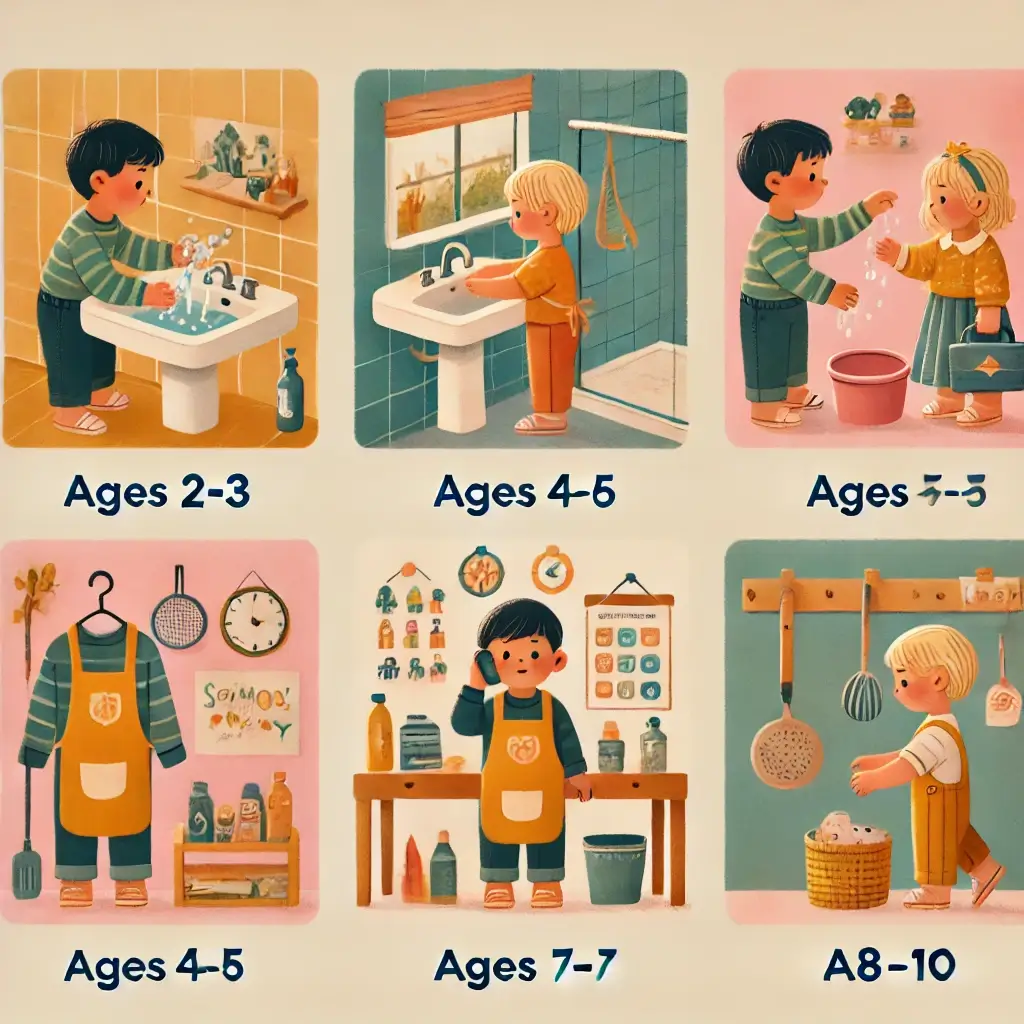The Foundation of Child Development
Fostering independence in children is one of the most vital roles of parenting, laying the foundation for confidence, decision-making, and lifelong resilience. Dr. Rachel Martinez, a developmental psychologist at Harvard’s Child Development Center, eloquently states, “independence is not just about self-sufficiency; it is the backbone of emotional and cognitive growth that defines a child’s future.” The process of cultivating age-appropriate autonomy begins as early as age two and continues through age ten, with each developmental stage presenting unique opportunities and challenges.
Research-Backed Evidence for Independence
Between these years, children experience significant cognitive, emotional, and physical growth, equipping them to handle more complex tasks. According to recent findings from the Journal of Child Development (2024), children who achieve independence milestones by age 10 exhibit 45% higher self-efficacy during adolescence. Moreover, structured independence-building activities have been shown to enhance problem-solving abilities by 60% and emotional regulation by 40% (American Academy of Pediatrics, 2024). These statistics highlight the importance of a strategic, research-backed approach to fostering autonomy.
The Role of Parents in Child Development
In addition to building life skills, fostering independence improves self-confidence and helps children navigate social environments more effectively. Parents play a critical role in striking a balance between providing support and encouraging self-reliance. This guide explores key developmental milestones, strategies for fostering independence, and the warning signs of delayed development.
Ages 2-3: Early Independence Development
During these years, children begin to explore their surroundings and develop a sense of agency. Key milestones include self-care tasks: helping with simple dressing tasks and washing hands with supervision, and social independence: brief separations from caregivers, making simple choices, and basic self-expression. The American Academy of Pediatrics (2024) reports that 85% of children in this age group can assist with basic tasks like putting away toys, demonstrating their readiness for guided responsibility.
Ages 4-5: Growing Responsibility
At this stage, children can manage more complex tasks and start taking on household responsibilities. Developmental markers include self-care skills: completing bathroom routines, dressing independently, and basic grooming, and household contributions: simple food preparation and pet care assistance. Dr. James Wilson, a pediatric behavioral specialist, emphasizes that these skills enhance confidence and teach accountability.
Ages 6-7: Academic and Social Growth
As children enter school, their independence extends to academic and social domains. By this age: 95% can manage morning routines and pack school bags, 85% can grasp basic money concepts, fostering early financial literacy and conflict resolution skills. Additionally, children develop conflict resolution skills and begin planning activities with minimal supervision.
Ages 8-10: Pre-Adolescent Development
Older children demonstrate advanced independence, such as managing schedules and navigating familiar areas. Notable milestones include personal management: preparing meals, organizing time, and maintaining personal hygiene without reminders, and community independence through simple purchases and group activities. These achievements prepare children for adolescence, where independence becomes a critical factor for academic and social success.
Identifying Development Delays
While most children reach milestones at their own pace, significant delays warrant attention. Dr. Sarah Thompson identifies common warning signs, such as: age-inappropriate reliance on adults, difficulty with basic self-care tasks or following instructions, and persistent anxiety around new challenges or unfamiliar environments. If parents notice these behaviors, seeking guidance from a developmental specialist is essential to identify underlying causes and provide targeted support.
Building Independence Through Structure
To support children in achieving independence milestones, parents can employ strategies including structured skill-building, creating an enabling environment, and emotional support. These approaches align with findings from the Harvard Child Development Center Study (2024), which emphasize the importance of balancing challenges with support for optimal child development.
The Path Forward
Supporting age-appropriate independence requires understanding developmental readiness and providing structured opportunities for growth. Dr. Martinez concludes, “Success in developing independence comes from balancing challenge with support, always keeping safety and individual development in mind.” Recent research indicates that children who achieve independence milestones are 70% more likely to demonstrate leadership skills and academic success in later years. The key lies in fostering an environment where children can learn, grow, and thrive.
References
American Academy of Pediatrics Guidelines (2024)
Harvard Child Development Center Study (2024)
Journal of Child Development (2024)
Pediatric Independence Research Review (2024)
Child Psychology Quarterly (2024)

